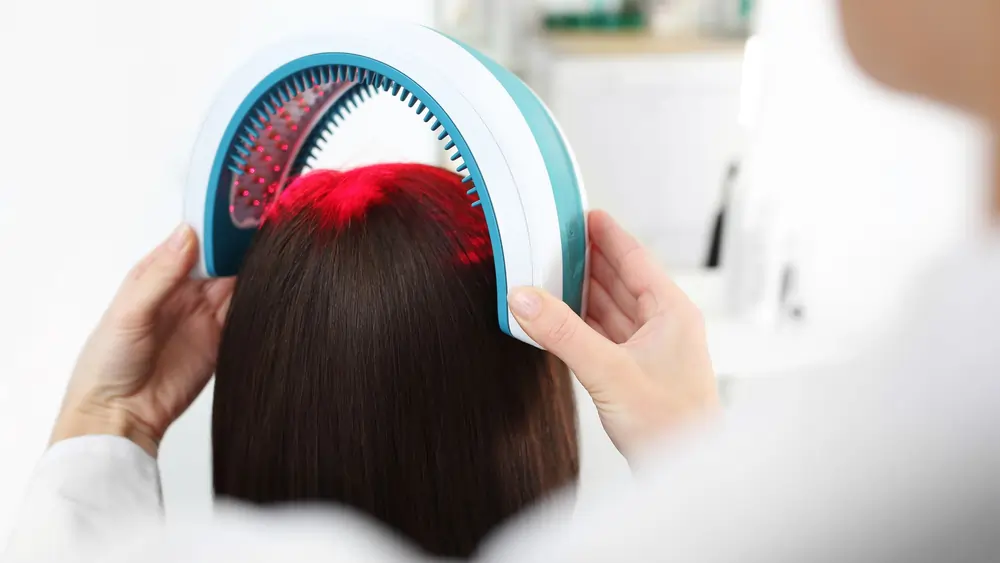Cicatricial Alopecia, sometimes also known as scarring alopecia, is an inflammatory condition that targets your hair follicles leaving them scarred and resulting in you having permanent hair loss. In this article, we’ll be going over what causes this disorder, what the symptoms are, what treatments are available and more.
A Better Understanding of Cicatricial Alopecia
Cicatricial Alopecia can leave you with bald patches on your scalp due to the permanent damage that has been caused by the disorder. Anything from 3% to 7% of healthy, otherwise fit men and women tend to have scarring alopecia, so it really is a rare condition. Those who suffer from cicatricial alopecia tend to become extremely distressed because there is no way to regenerate or regrow their hair. Despite cicatricial alopecia not being contagious, it can affect both males and females of any age, but it is quite rare to find it in children.
What is the Cause of Cicatricial Alopecia?
There is no clear understanding of the causes of the disease, but inflammation is thought to destroy the stem cells and oil glands of the hair follicles, leading to fibrosis (scarring) and hair loss. When your hair follicles are damaged by inflammation, it can lead to cicatricial alopecia. Additionally, this damage can be caused by burns or infection. There are several cell types involved in inflammation that can include lymphocytes and natural killer cells. There is no research that shows cicatricial alopecia is a hereditary condition.
Signs & Symptoms of Cicatricial Alopecia
When it comes to the symptoms of cicatricial alopecia, they will progress differently when compared from one person to another. There are a few symptoms of scalp ailment to look out for, such as:
- Redness
- Scaly skin
- An increase or decrease in your pigmentation
- Pustules
- Draining sinuses
- Inflammation
- Thinning of your hair
The damage caused to your hair follicles is below your skin, so you won’t necessarily see a scar anywhere on your scalp despite your scalp being left completely smooth and bald.
Cicatricial alopecias characterised by predominantly lymphocytic inflammation include pseudopelade (Brocq), lichen planopilaris, and frontal fibrosing alopecia.
How to Diagnose Cicatricial Alopecia
You will need to see a medical professional who will do a few tests on you to properly diagnose you. Your doctor may test for a few things to ensure your hair loss is caused by cicatricial alopecia and not one of the other hair loss causes.
One of the first things a doctor would do when testing you for cicatricial alopecia is take a biopsy off your scalp. The results of the biopsy will be able to give the doctor more information on the type of inflammation, where the condition is located and how much inflammation is currently present. All of the biopsy results are required for your doctor to diagnose if you have cicatricial alopecia and what type you may have.

Types of Scarring Alopecia
There are various types of scarring alopecia, but the main two are Primary Scarring Alopecia and Permanent Scarring Alopecia. Let’s get into these a bit more.
Primary Scarring Alopecia
This is where your hair follicle is physically damaged and thereafter replaced by fibrous tissue which in turn destroys the stem cells in your root. Primary scarring alopecia can be categorised into three groups, namely:
- Lymphocytic Alopecia
- Neutrophilic Alopecia
- Mixed Cicatricial Alopecia
These three categories further include the following:
- Frontal Fibrosing Alopecia (FFA)
- Lichen Planopilaris (LPP)
- Central Centrifugal Cicatricial Alopecia (CCCA)
- Pseudopelade
- Folliculitis Decalvans (FD)
Permanent Scarring Alopecia
Permanent scarring alopecia is also known as secondary cicatricial alopecia and this is when your hair follicles get damaged due to external factors such as:
- Straightening and curling irons
- Chemical Straightening
- Radiotherapy
- Accidents that result in head trauma
Cicatricial Alopecia Treatment
This condition results in permanent damage to your hair follicles, so the best thing would be to try to seek medical attention as early as possible to prevent the condition from spreading and to heal the surrounding areas. If you wait too long to seek treatment, the condition may be irreversible. Seeing as scarring alopecia occurs in different stages and types, the treatments will vary, but some of the treatments your doctor may recommend include:
- Medication
- Hair Transplantation
- Scalp Reduction Surgery
Medication:
A variety of oral and topical medications are usually prescribed to treat cicatricial alopecia. You get special shampoos and serums that have anti-inflammatory properties inside to assist with healing the follicles. In order to restore hair growth, minoxidil can be used to stimulate the small unscarred hair follicles that remain. Additionally, there are also some medications that you can take orally that will strengthen your blood vessels, improving the overall quality of your scalp.
Hair Transplantation
Since cicatricial alopecia is such a severe condition, dedicated solutions are often necessary. It may be worthwhile for patients to consider getting a hair transplant if the disorder has been dormant for at least one year. The procedure involves taking hair strands from a donor site and transplanting them to the affected area through a minimally invasive procedure. When dealing with scarring hair loss, FUE (Follicular Unit Extraction) harvesting is the recommended hair transplantation method.
Scalp Reduction Surgery
This is an invasive procedure that can be used to treat cicatricial alopecia. Surgically, the adjacent skin is stitched together once the infected part of the scalp has been removed. Let’s say you’re struggling with this disorder on the top of your scalp. The surgeon will remove that part of the scalp, pull the skin from the sides and stitch them up. This method can produce a few side effects and leave you with minute scars.
Frequently Asked Questions
How is cicatricial alopecia diagnosed?
You will need to consult with your doctor who will have to perform a biopsy of your scalp to confirm whether or not you have scarring alopecia.
What are the causes of cicatricial alopecia?
While work is still being done to discover what the cause of this condition is, it is known that the end result is due to your hair follicles being damaged. This is often the case with inflammation.
Are there any treatments available for cicatricial alopecia?
Yes. If you are in the early stages of this condition, you can try a few things such as medications, a hair transplantation or scalp reduction surgery.
Does cicatricial alopecia have permanent effects?
It can, yes. If you wait too long to seek treatment, the effects of cicatricial alopecia can prove to be permanent.
Other Types of Hair Loss
- Anagen Effluvium
- Telogen Effluvium
- Androgenetic Alopecia
- Alopecia Areata
- Tinea Capitis
- Hair Shaft Abnormalities
- Hypotrichosis
Sources
- NCBI – WWW Error Blocked Diagnostic. (2013). NCBI. https://www.ncbi.nlm.nih.gov/pmc/articles/PMC3855115/




